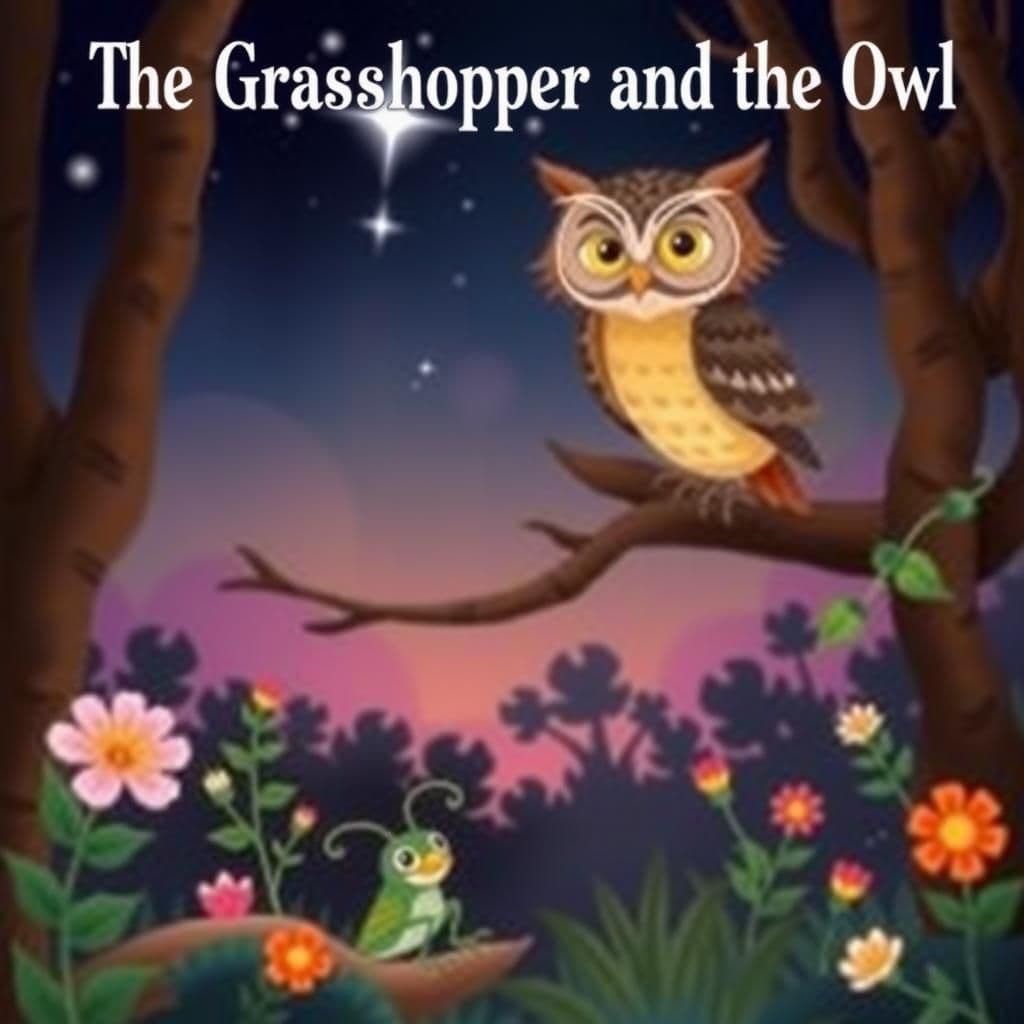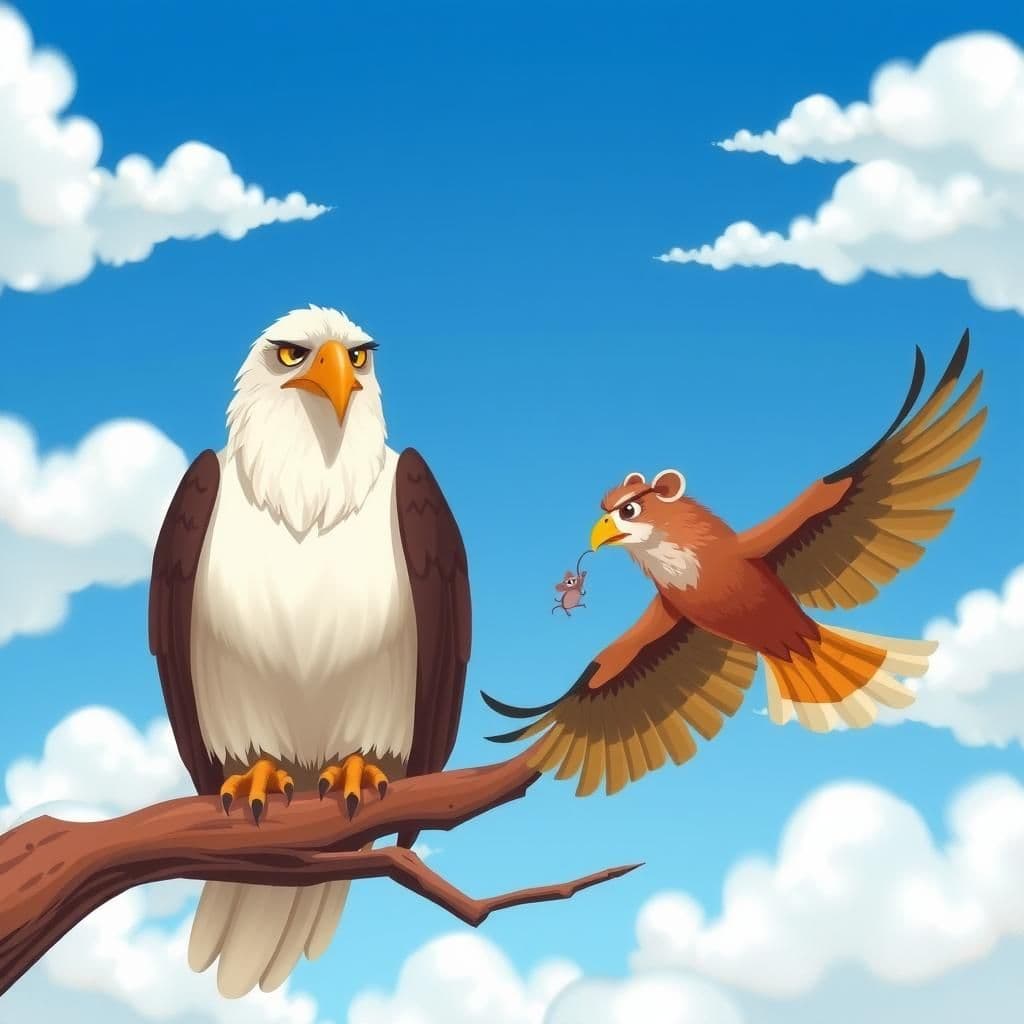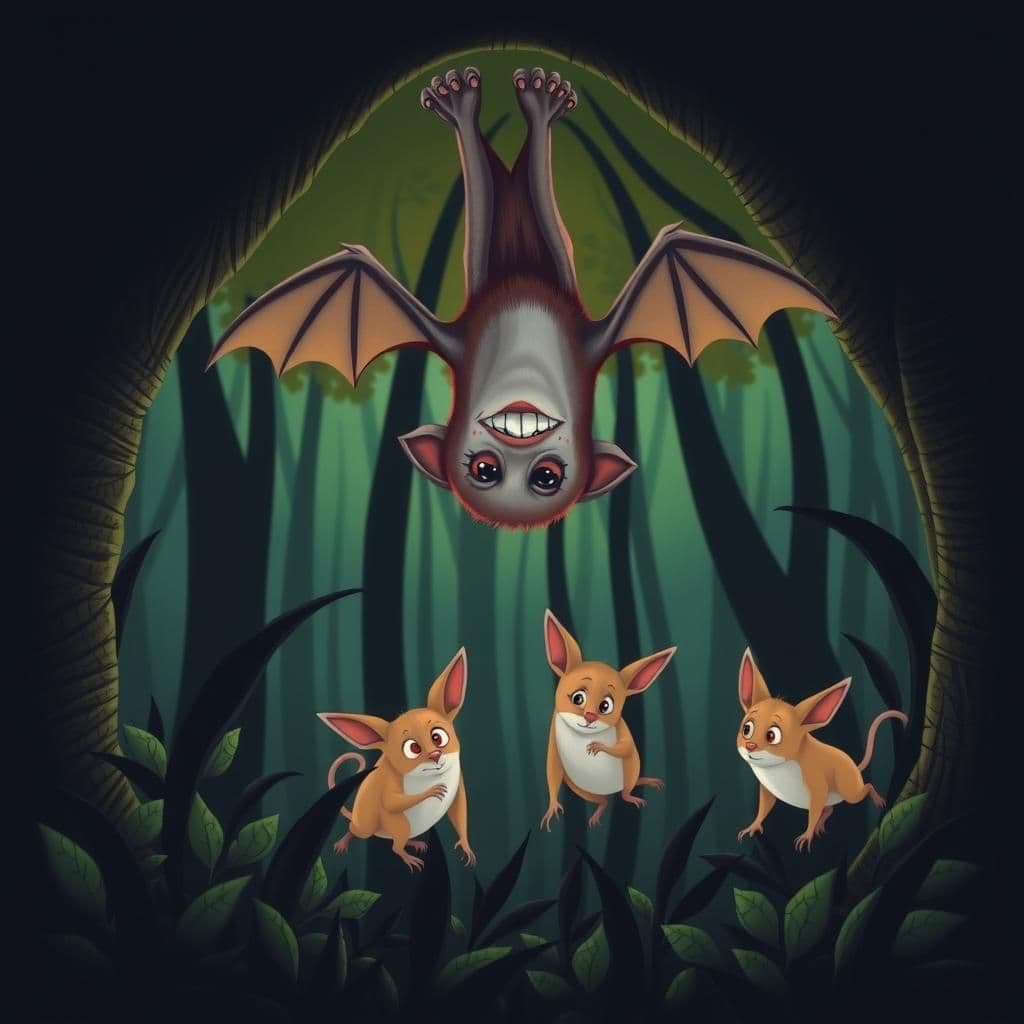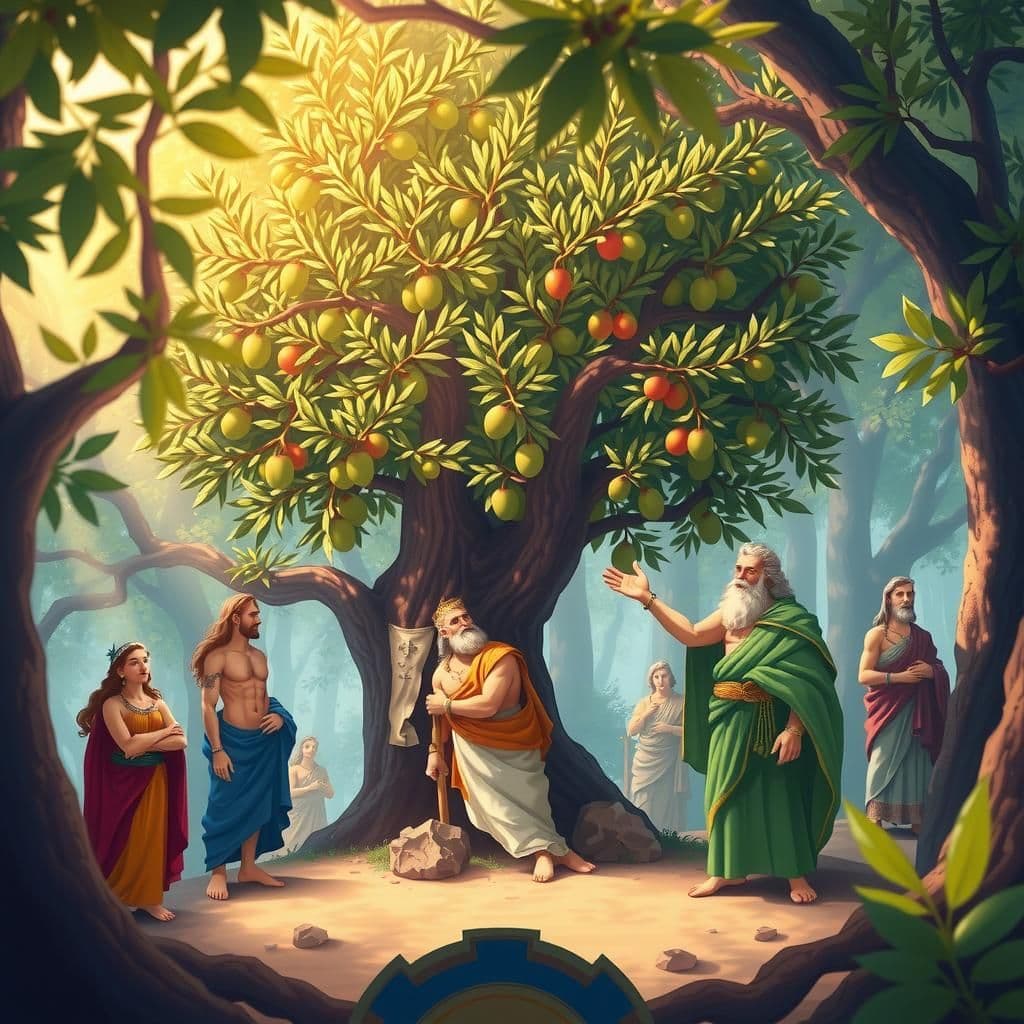The Grasshopper and the Owl

Story Summary
In "The Grasshopper and the Owl," a moral story for kids, an owl, disturbed by a grasshopper's incessant chirping, pleads with her to stop, but the grasshopper ignores her. Lured by the owl's flattery and a promise of nectar, the unsuspecting grasshopper eagerly approaches, only to be deceived and killed. This easy small story with moral teaches valuable lessons about the dangers of vanity and the consequences of ignoring wise counsel.
Click to reveal the moral of the story
Beware of flattery, as it can lead to your downfall.
Historical Context
This fable, likely derived from Aesop's collection of moral tales, reflects the ancient Greek tradition of using anthropomorphized animals to convey lessons about human behavior and consequences. In various retellings, including those by Phaedrus and later La Fontaine, the story highlights themes of hubris and the dangers of ignoring wise counsel, illustrating how pride can lead to one's downfall. The use of the Owl and Grasshopper symbolizes the conflict between wisdom and folly, a common motif in folklore across cultures.
Our Editors Opinion
This fable illustrates the dangers of overconfidence and the perils of ignoring warnings from those with more experience. In modern life, this can be seen in scenarios such as a young professional who dismisses the advice of a seasoned mentor about workplace decorum, only to find themselves ostracized for inappropriate behavior.
You May Also Like

The Eagle and the Kite
In the fable "The Eagle and the Kite," a sorrowful Eagle, in search of a suitable mate, is deceived by the Kite's boastful claims of strength and ability to catch prey. After their marriage, the Kite fails to deliver on his promise, bringing only a worthless mouse instead of the promised ostrich, revealing the moral of the story: deceit can lead to disappointment. This tale illustrates the essence of moral-based storytelling found in well-known moral stories and animal stories with moral lessons.

The Bat and the Weasels
In this thought-provoking moral story, a clever Bat encounters two different Weasels, each time using his wits to adapt his identity and escape being eaten. First, he deceives one Weasel by claiming to be a mouse, and then he convinces another that he is not a mouse but a Bat, showcasing the importance of resourcefulness in difficult situations. This short story serves as an educational moral tale about the value of turning circumstances to one's advantage.

The Trees Under the Protection of the Gods
In "The Trees Under the Protection of the Gods," various deities select trees for their protection, favoring those that do not bear fruit to avoid the appearance of greed. Minerva advocates for the fruitful olive, leading Jupiter to impart a thought-provoking moral: true glory lies in usefulness, not superficial honor. This short and sweet moral story highlights the importance of impact over appearance, making it a compelling lesson on value and purpose.
Other names for this story
The Noisy Grasshopper, The Owl's Revenge, Nighttime Chatter, The Grasshopper's Folly, The Silent Night, Nature's Duel, The Owl and the Chirper, Sweet Lure of Death
Did You Know?
This fable illustrates the theme of cunning versus brute force, showcasing how the Owl's cleverness ultimately triumphs over the Grasshopper's arrogance and disregard for others, emphasizing the dangers of vanity and the consequences of ignoring warnings.
Subscribe to Daily Stories
Get a new moral story in your inbox every day.
Explore More Stories
Story Details
- Age Group
- adultkidschildrenstory for class 2story for class 3story for class 4story for class 5story for class 6story for class 7story for class 8
- Theme
- Deceptionconsequences of pridethe struggle between different ways of life
- Characters
- OwlGrasshopperPallas (Athena)Apollo
- Setting
- foresthollow